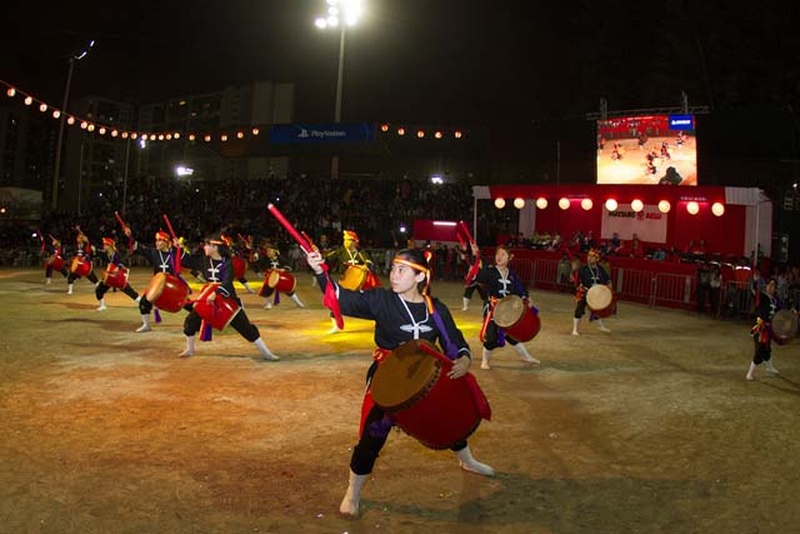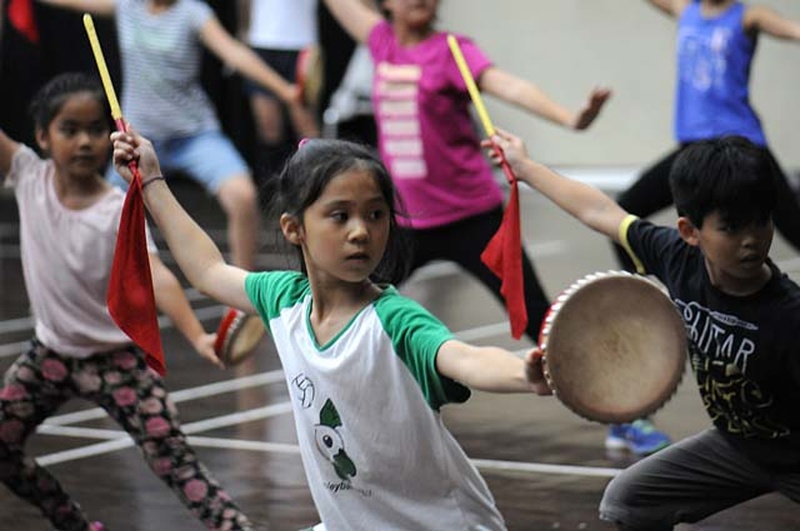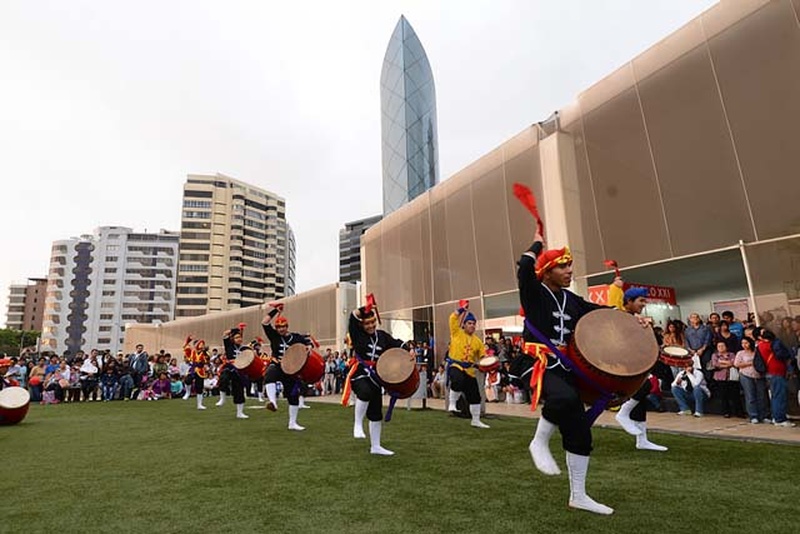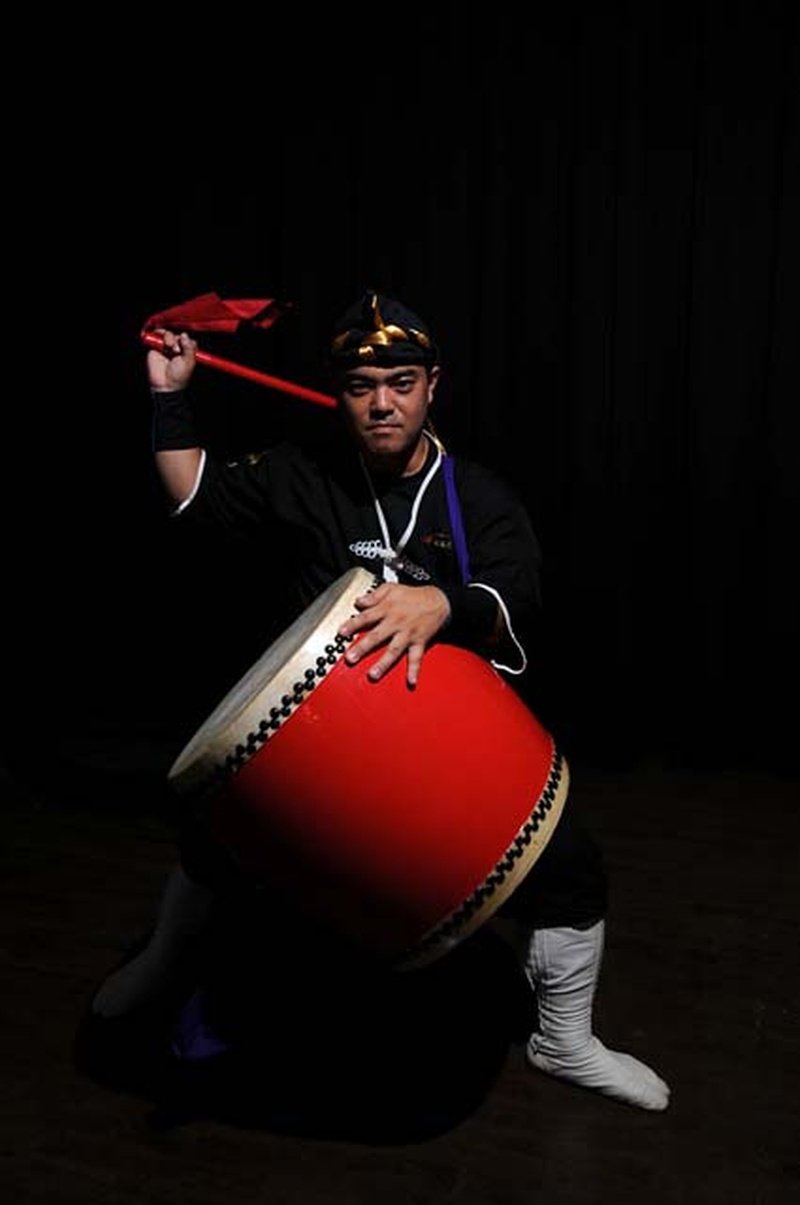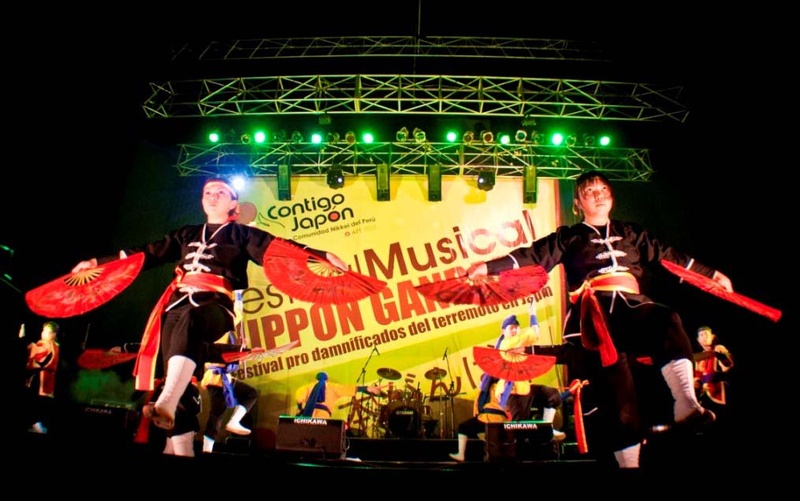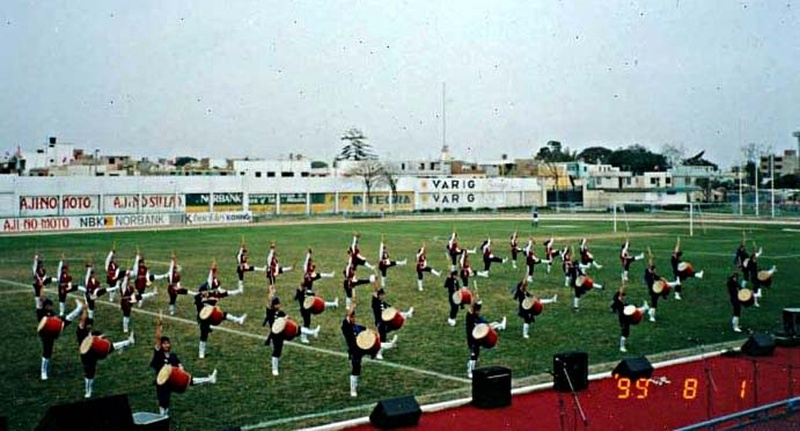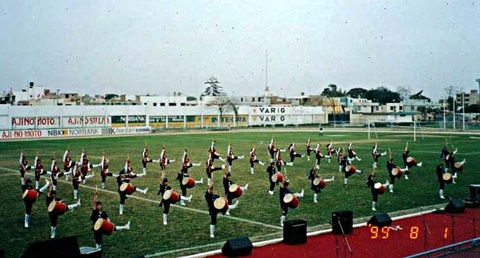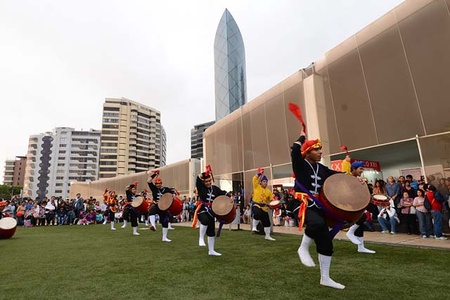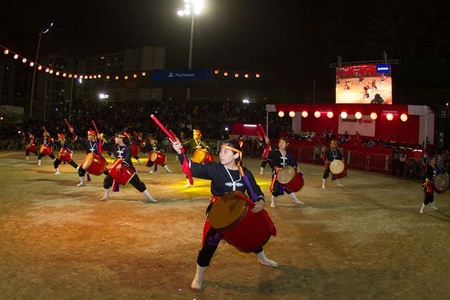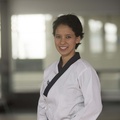When Kuni Terukina arrived at the eisa by one of those chances that seem created by destiny, Okinawa was for him synonymous with boredom. He had been there shortly before, in 1998, to visit his family. He got so bored that he promised himself never to return.
He was then a restless teenager, wanting to go out, play, have fun, and Okinawa, the land of his ancestors and where he himself was born (although he grew up in Peru), was far from being fun.
Everything changed when he went to pick up a friend for an eisa rehearsal. Kuni's aunt, who belonged to the dance group, thought he had gone to sign up and signed him up. “I'll wait for you on Saturday,” he told her. Since he had free that day, he chose not to correct the misunderstanding and move on. Until then I believed that eisa was a dance practiced by people in kimono. He tried it, he liked it and it stayed forever.
In 1999, after the celebrations for the centenary of Japanese immigration to Peru, the Peruvian subsidiary of the Ryukyukoku Matsuri Daiko group was formed. Kuni was one of the founding members.
Two years later, he broke his promise and returned to Okinawa. It was another person. Or the same one, but with different eyes. I was fascinated. In three weeks, with the enthusiasm of a boy who has discovered his vocation, he tried to absorb everything he could about the culture and history of Okinawa, visiting temples, learning about the war, etc. He wanted to make up for the time he had not taken advantage of during his previous stay.

“How could I have said that?” he asked himself, remembering the teenager who once said: “Okinawa is such a boring place that I won't go back.”
This mutation was possible thanks to Ryukyukoku Matsuri Daiko, who now has him as general director. Its story reflects, in one way or another, what this group has meant to many young people of Okinawan ancestry: reconnection with their roots.
Boys and girls who joined the group to meet people, or who were enrolled by their mothers to socialize or fill their free time, and who knew little or nothing about Okinawa, begin to become interested in the culture of their ancestors. It is no longer just dancing or playing the drum, but finding out what they dance, why, where the dance originated, etc. From there some jump to larger topics, such as the history of Okinawa when it did not belong to Japan or its sufferings during World War II.
However, this does not mean that the group is restricted to Okinawan descendants. Following a philosophy that dates back to the times when Okinawa was independent, and that advocated a policy of open arms without distinction of any kind vital for its commercial survival, Ryukyukoku Matsuri Daiko welcomes anyone who wishes to join. “Anyone who wants to come with us and learn is welcome,” Kuni says.
RECIPROCITY
More than 420 people from the eisa group of the Okinawan Association of Peru performed at the central celebration of the centenary of Japanese immigration to Peru in 1999. The Peruvian branch of Ryukyukoku Matsuri Daiko did not yet exist, but the road was already paved for its formation . The success of the call for the centenary showed that there was vast human capital that could not be wasted.
In September of that year the group was officially born. Its first president was Kiomi Moromizato.
Nobody imagined it would go this far. It is estimated that in its 15 years of existence, between 1,500 and 2,000 people have passed through it.
Today it has two subsidiaries: the central one, which operates in the La Unión Stadium Association, has between 50 and 60 people over 15 years of age and 35 children; and the one in the north, at the Hideyo Noguchi school, is made up of nine adults and 16 children. The oldest of its members is 41 years old and the youngest is 6.
All its members went through a trial period. Once they passed, they received authorization to make their own uniforms.
The group has a fundamental rule that comes from Okinawa: no profit. The idea is: just as you learned without paying, teach without getting paid. Its members only have to contribute ten soles per month that goes to a common fund to cover the rent of the premises they have in AELU. The club offers them several facilities: a modest monthly payment, a space to store their drums and free access to group members who are not members. “We are quite grateful to AELU,” says Kuni.
The Peruvian subsidiary of Ryukyukoku Matsuri Daiko has been recognized by the Ministry of Foreign Affairs of Japan for its contribution to the dissemination of Japanese culture. Their art has taken them to cities in Peru such as Piura, Trujillo, Chiclayo and Ica, and countries such as Bolivia, Brazil and Argentina.
Data
- The eisa is an Okinawan dance that is performed during obon, a festival celebrated to welcome the spirits of ancestors who visit the homes of their relatives. On their last day of visit, the spirits are bid farewell to the rhythm of taikos (Japanese drums), which accompany their return to the world of the dead.
- In 1982, the Ryukyukoku Matsuri Daiko group was founded in Okinawa to guide wayward young people and channel their impetus into the practice of eisa. In this way, it was also sought to preserve the Okinawan cultural heritage by transmitting it to new generations.
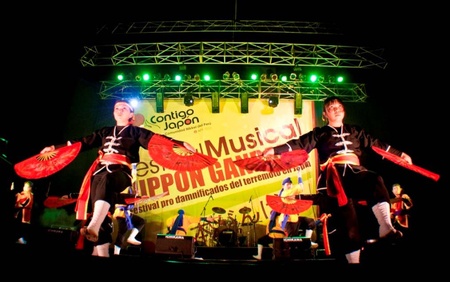
* This article is published thanks to the agreement between the Peruvian Japanese Association (APJ) and the Discover Nikkei Project. Article originally published in Kaikan magazine No. 95, and adapted for Discover Nikkei.
© 2015 Texto: Asociación Peruano Japonesa; © 2015 Fotos: Asociación Peruano Japonesa




